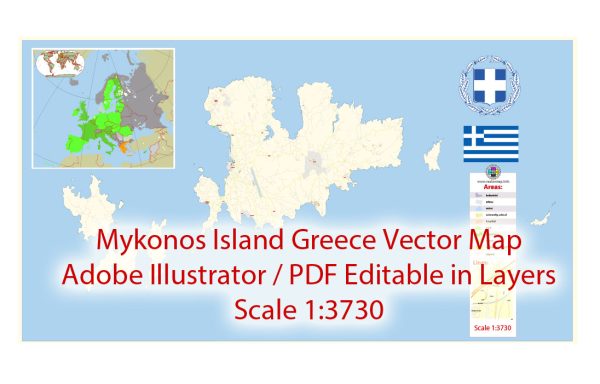Mykonos, a picturesque island in the Aegean Sea, is renowned for its beautiful landscapes, vibrant nightlife, and traditional architecture. The history of urban development on the island is rich and influenced by various civilizations that have left their mark over the centuries.
- Ancient Period: The island has a history dating back to ancient times, with evidence of settlement as far back as the 11th century BC. During the Hellenistic period, Mykonos was under the influence of the Delian League and subsequently became part of the Roman Empire. The ancient city of Mykonos was likely located near the current capital, Chora.
- Byzantine Era: In the Byzantine era, Mykonos faced threats from pirates and the Saracens. To protect against these invasions, residents moved from the interior to the coast, establishing what is now the main town, Chora. The construction of defensive towers and walls characterized this period, and some remnants of these structures can still be seen today.
- Venetian Rule: The island came under Venetian rule in the 13th century, and during this time, windmills were constructed to harness the strong winds for milling grain. Several of these iconic windmills still stand on the island and have become emblematic of Mykonos.
- Ottoman Period: Mykonos, like many other Greek islands, experienced Ottoman rule for several centuries. During this time, the island’s economy thrived through maritime activities and trade. The Ottoman influence is evident in some architectural elements found in the old town.
- Greek Independence: Mykonos, along with the rest of Greece, gained independence in the early 19th century. The island’s economy continued to flourish, driven by shipping, trade, and agriculture.
- 20th Century and Tourism Boom: In the mid-20th century, Mykonos started to transform into a popular tourist destination. The island attracted artists, intellectuals, and celebrities, contributing to its cosmopolitan atmosphere. The traditional Cycladic architecture, with whitewashed buildings and narrow winding streets, was preserved and enhanced during this period.
- Contemporary Period: Today, Mykonos is a world-famous destination known for its luxurious resorts, vibrant nightlife, and Cycladic architecture. The old town of Chora is a maze of narrow streets, charming shops, and restaurants. The island has successfully blended its rich history with modern amenities to create a unique and alluring environment for visitors.
Mykonos’ history of urban development reflects a blend of ancient roots, medieval influences, and the demands of contemporary tourism, creating a distinctive and enchanting atmosphere that continues to draw people from around the world.


 Author: Kirill Shrayber, Ph.D.
Author: Kirill Shrayber, Ph.D.